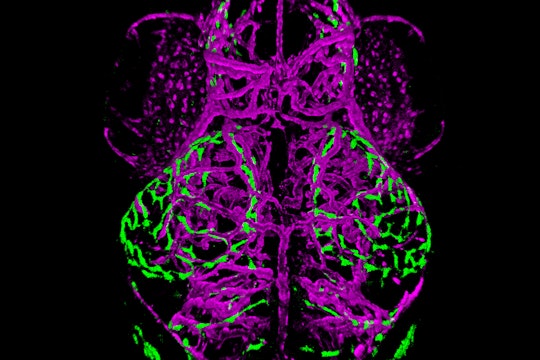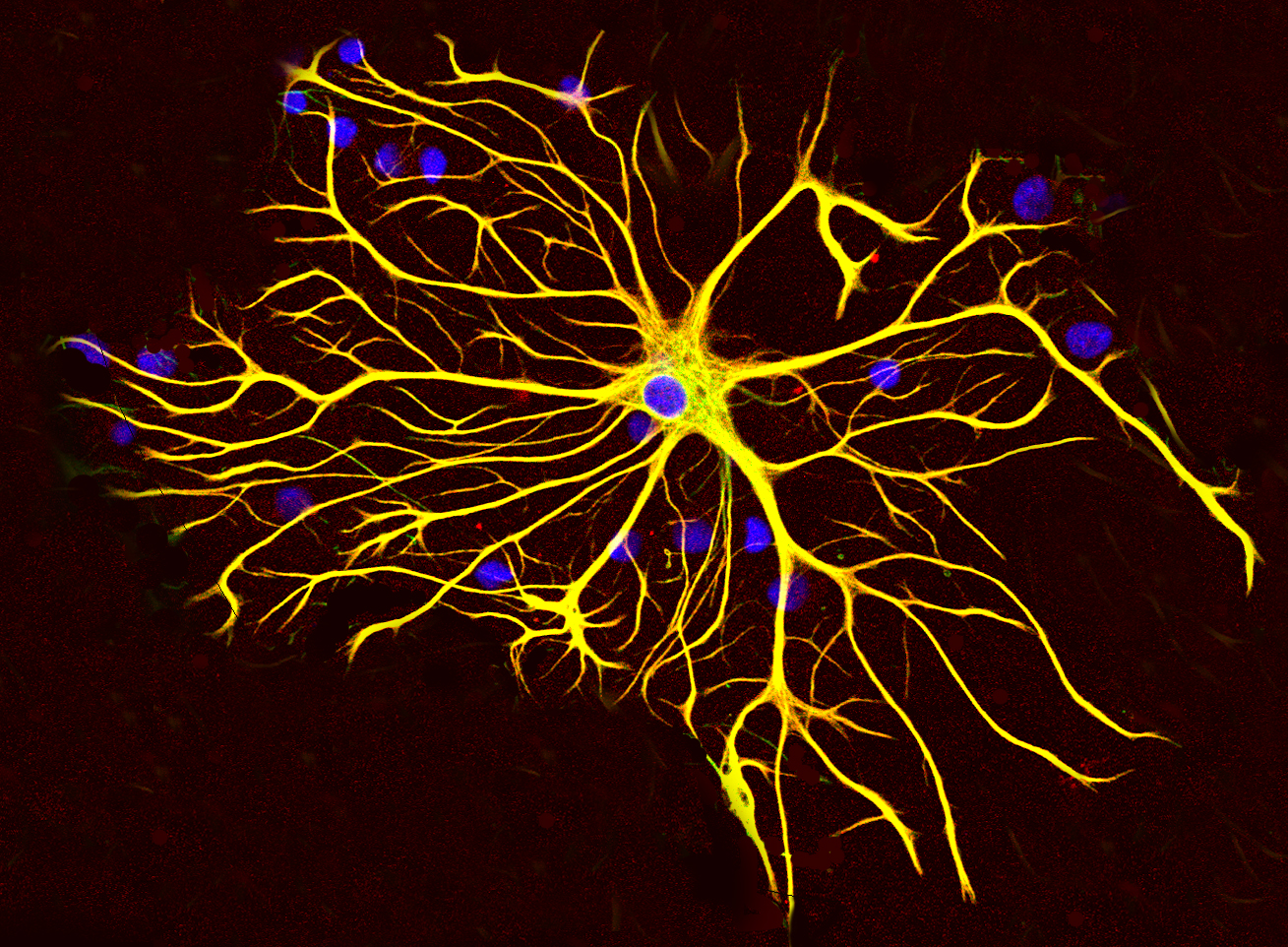
NIH Image Gallery on Wikimedia Commons.
Feel like quitting? Blame your brain cells
Understanding the biological mechanisms of “giving up” in fish may teach us about complex human behaviors
Throughout our lives, we are often encouraged to “not give up” when facing a hurdle. But in nature, giving up isn't necessarily seen as something inherently bad. Realizing that an attempt to achieve something is not accomplishing its goal, and then stopping that behavior, can actually be beneficial. When confronted with a difficult challenge or obstacle, animals often "give up" to conserve energy between attempts or to identify other strategies to succeed— or reassess if the effort is even worth it.
So, surrender isn't always bad. But how does your brain actually detect failure and make the decision to stop trying something? A research group led by Misha Ahrens at the Howard Hughes Medical Institute discovered the answer in a recent study published in Cell.
While this behavioral switch is a complex process, it is common enough that zebrafish do it, which allowed Ahren's team to use them as a model organism. They controlled what the fish were seeing during the experiment with virtual reality. No, they didn't outfit the fish with tiny VR goggles — instead the researchers surround them with screens that allowed them to control what the fish saw. They then showed video to make the fish think they were moving backwards, even though they were attempting to swim forward. After repeatedly trying to advance — but perceiving that they weren’t getting anywhere — the zebrafish suddenly stopped swimming, entering a state of “passivity.” They gave up.
To identify which brain cells played a role in this behavior switch, the researchers imaged the fish brains to measure the activity of different types of cells. The central nervous system is mainly made up of two types of cells: neurons and non-neuronal cells called glia. Glia have long been overlooked, simply thought of as a kind of ‘glue’ that only provided support to the central nervous system. However, recently studies have shown that these cells are actually capable of a lot more. It turns out there's actually a lot of diversity within the glial cells: There are astrocytes, oligodendrocytes, and microglia, which all perform different functions within the brain.
.jpg)
Zebrafish, the lab rat of the fish world.
Oregon State University on Wikimedia Commons.
Surprisingly, Ahren's team found that astrocytes in particular were activated at the onset of the zebrafish's passive state. These are star-shaped cells that control levels of ions and neurotransmitters and the development of neural cells and synapses, among many other functions. Right before the fish gave up and stopped swimming, astrocytes in a specific area of the cerebellum called the lateral medulla oblongata lit up in the brain imagery.
Neurons are usually thought of as the superstars of the brain, earning credit for most of the complex behavioral functions performed by animals. But Ahren's observations suggest that it is actually astrocytes that may be playing the crucial role of integrating information and controlling the specific and complicated behavior of giving up. Other studies support this idea: Researchers have found that astrocytes also control complex processes such as avoidance behaviors and sleep.
Ahren's team was not entirely convinced about their results at first — they had expected neurons to be the main players in the decision to give up. "We were excited and also very skeptical. We challenged ourselves to try and disprove it,” Ahrens said in a press release. So the scientists designed six more experiments, three to activate and three to inactivate astrocytes, to look more closely at how manipulating the astrocytes altered zebra fish behavior.
They found that even when they wiped out astrocytes with a laser, the fish just kept attempting to swim! In other words, even with their astrocytes turned off or "killed," the behavioral switch from swimming to passivity never happened. On the other hand, when the researchers artificially activated astrocytes in the fish, they were able to induce passivity. Taken together, the results of these two sets of experiments verify that astrocytes are very important in giving up.

Astrocytes, a type of brain cell. The nuclei of individual cells are stained blue, and structural filaments within the cell are yellow.
GerryShaw on Wikimedia Commons
Ahren's team also found that the astrocytes weren't the only cells responding during the process of giving up. The imagery from the zebrafish brains showed that a type of neuron called noradrenergic neurons were also activated, and that this occurred before the fish gave up. It seems that these neurons detect failures and send the signal to the astrocytes to ultimately activate the 'give up' command.
These two cell types combined form a seemingly simple circuit, with astrocytes at the helm, that is able to control a complex switch between different behavioral states in fish. The next question is how exactly the astrocytes flip the switch, and if they do this similarly in humans. If astrocytes are so important in performing computations and controlling complex behaviors, do other glial cells have similar roles? It's an intriguing idea.
Studying the role of glial cells will likely fill in gaps in our understanding of what controls behavior in humans. In the meantime, this study provides a handy response for the next time someone exhorts you not to quit: your glia cells may just be telling you to take a break.




This is a neat study, and I think you did a great job of explaining the methods and results for a lay audience. I do think it’s important to clarify that the activated astrocytes they found were in part of the brainstem, which is close to the cerebellum as you’d written but not in the same place. This is interesting to me because this region, the medulla oblongata, is involved in involuntary behaviors, suggesting that giving up might be an involuntary behavior for these fish. As you alluded to, this makes me wonder how giving up is controlled in animals like humans that perform more complex behaviors. We can make the conscious choice to give up or not, depending on factors like the potential consequences of our actions, so I’d be curious to know how astrocytes might interact with the decision-making parts of our brains to help us decide when to quit and when to persevere.